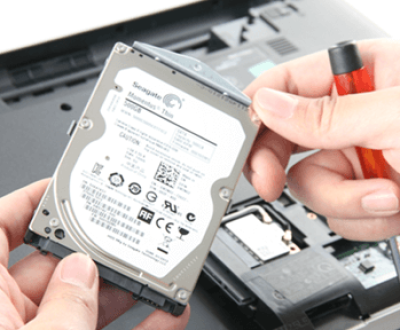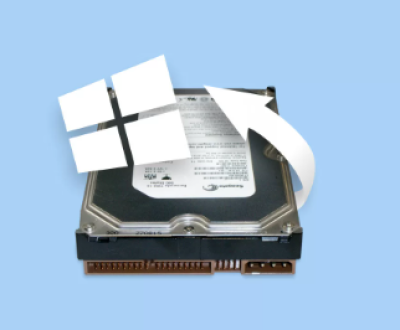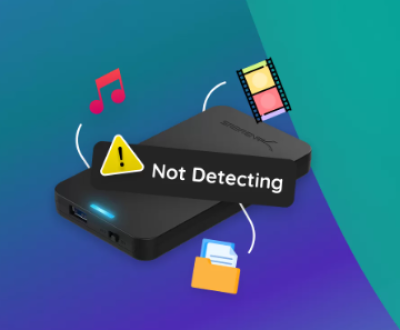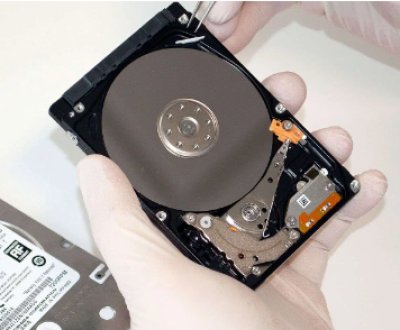Formatting a disk essentially removes the file system and the information about the files stored on it, but it doesn’t immediately erase the actual data.
Before we dive into the recovery process, it’s important to understand what happens during disk formatting. There are two types of formatting that can occur:
Quick Format:
A quick format only removes the file system table (such as NTFS, FAT32. or exFAT) and marks the space as available for new data. The actual data remains on the disk and can be recovered using the right tools.

Full Format:
A full format not only removes the file system table but also overwrites the disk sectors with zeros or other data patterns. This makes recovery more difficult, though still not impossible in many cases, depending on the extent of overwriting.
In either case, it’s important to stop using the hard disk immediately after formatting to prevent new data from overwriting the lost files. The more you use the disk, the higher the chance of losing the ability to recover your data.
Step-by-Step Guide to Recovering Data from a Formatted Hard Disk
Step 1: Stop Using the Formatted Disk
As mentioned earlier, the sooner you stop using the formatted disk, the better your chances of successful data recovery. Any new data written to the disk can overwrite the files that were originally there, making them more difficult or even impossible to recover.
If you were using the disk for regular operations, power off your computer or disconnect the drive from your system to avoid any data writes.
Step 2: Choose the Right Data Recovery Software
Panda Assistant is a versatile and user-friendly data recovery tool designed to help users recover lost, deleted, or corrupted files from a variety of storage devices. Whether you’re dealing with accidental file deletion, disk corruption, or even a formatted drive, Panda Assistant provides an effective solution to retrieve your important data.
Key Features of Panda Assistant:
Comprehensive File Recovery: Panda Assistant can recover a wide range of file types, including documents, images, videos, audio files, and more. It supports popular file systems like NTFS, FAT32. and exFAT, making it suitable for most types of storage devices.
Recovery from Multiple Devices: Panda Assistant works with hard drives, USB flash drives, memory cards, and other external storage devices. It also supports data recovery from damaged or corrupted disks.
User-Friendly Interface: The software is designed for both beginners and experts, with an intuitive interface that guides users through the recovery process. The simple drag-and-drop functionality makes it easy to use, even for those with minimal technical knowledge.
Advanced Scanning Options: Panda Assistant offers both quick and deep scan modes. While the quick scan helps recover recently deleted files, the deep scan goes deeper into the storage device to locate files that may have been lost due to formatting or corruption.
Preview Before Recovery: The software allows users to preview recoverable files before restoring them, ensuring that the files are intact and meet recovery expectations.
Safe and Secure: Panda Assistant prioritizes data security and ensures that no further damage is done to your storage device during the recovery process.
Step 3: Install and Launch the Data Recovery Software
Once you’ve chosen your data recovery tool, the next step is to install and launch it. Make sure to install the software on a different disk or partition from the formatted hard disk to avoid overwriting the data you’re trying to recover.
Most data recovery software follows a similar process, but generally, you’ll need to:
Select the formatted drive you want to scan.
Choose the type of scan (quick or deep scan).
Begin the scanning process, which can take anywhere from a few minutes to several hours depending on the size of the disk and the depth of the scan.
Step 4: Scan the Formatted Hard Disk
The software will analyze the formatted disk to find any recoverable data. There are two primary types of scans:
Quick Scan: This scan focuses on finding files that were recently deleted or lost due to formatting. It’s faster but may not be as thorough as a deep scan.
Deep Scan: This scan examines the entire disk sector by sector and is more likely to find lost files, even if they’ve been removed for a while. It can take a significantly longer time, especially on large hard drives, but it increases the chances of finding recoverable data.
Step 5: Preview and Select the Files for Recovery
Once the scan is complete, the data recovery software will present you with a list of recoverable files. Many tools offer a preview feature, which allows you to view the files before recovery, helping you to identify the ones you need.
At this stage, you should:
Carefully browse the recovered data.
Select the files and folders you want to recover.
Avoid saving the recovered files back onto the same formatted disk (choose a different drive for the recovery process).
Step 6: Recover the Data
After selecting the files you wish to recover, click on the “Recover” button. The software will begin restoring the data to the specified location. Depending on the size of the files and the speed of the recovery tool, this process may take a while.
It’s important to note that while the data recovery software can retrieve most files, it may not be able to recover everything, especially if the data has been overwritten during use after formatting. Additionally, some file types, such as system files or fragmented files, may be difficult to recover in a usable state.
Step 7: Backup Your Recovered Data
Once your data has been recovered, it’s crucial to back it up on a separate storage medium, such as an external hard drive or cloud storage. This will help you avoid future data loss and ensure that you have copies of your important files in a safe place.
Step 8: Repair or Reformat the Hard Disk
After successfully recovering your data, you may need to repair or reformat the hard disk, especially if it was corrupted during the formatting process. You can use built-in tools like CHKDSK on Windows or Disk Utility on macOS to repair the disk. If the disk is physically damaged, you may need to consult a professional data recovery service.
Other Advanced Methods for Data Recovery
If software-based recovery does not work or if you’re dealing with a particularly difficult case (e.g., the data is severely corrupted), there are a few additional options to consider:
Use of a Professional Data Recovery Service: If you’ve exhausted software recovery methods and still haven’t recovered the data, a professional data recovery service might be your best bet. These services often have the expertise and tools to recover data from damaged or severely corrupted disks. However, professional services can be expensive, so this should be a last resort.
Forensic Data Recovery: In cases where the data is particularly sensitive or if the drive has been severely damaged, forensic data recovery might be required. This approach is generally more expensive but can be highly effective in retrieving data from even the most challenging situations.
Tips for Preventing Data Loss in the Future
Regular Backups: Always back up important data regularly to external storage devices or cloud-based services. This will minimize the impact of accidental formatting or other types of data loss.
Use Data Recovery Software Preemptively: Install data recovery software on your system before disaster strikes. That way, if something goes wrong, you can quickly recover your data without wasting time searching for a solution.
Create Recovery Partitions: Consider setting up recovery partitions on your hard drive that can help you recover your system in case of a failure. This can be useful for both system crashes and data corruption.
Be Mindful of Formatting: Always double-check the drive you are formatting. Accidental formatting of the wrong disk is one of the most common causes of data loss.
Recovering data from a formatted hard disk can be a daunting task, but it is entirely possible with the right approach and tools. The key to successful data recovery is to stop using the disk immediately, choose the right recovery software, and carefully follow the recovery steps. Remember, even if the data seems lost at first, there’s often a way to retrieve it, especially if you act quickly and follow the outlined steps.
About us and this blog
Panda Assistant is built on the latest data recovery algorithms, ensuring that no file is too damaged, too lost, or too corrupted to be recovered.
Request a free quote
We believe that data recovery shouldn’t be a daunting task. That’s why we’ve designed Panda Assistant to be as easy to use as it is powerful. With a few clicks, you can initiate a scan, preview recoverable files, and restore your data all within a matter of minutes.
Subscribe to our newsletter!
More from our blog
See all postsRecent Posts
- How to recover data from portable hard drive 2025-07-10
- How to recover data from a broken hard drive 2025-07-10
- How do i recover files from a formatted hard drive 2025-07-10

 Try lt Free
Try lt Free Recovery success rate of up to
Recovery success rate of up to









